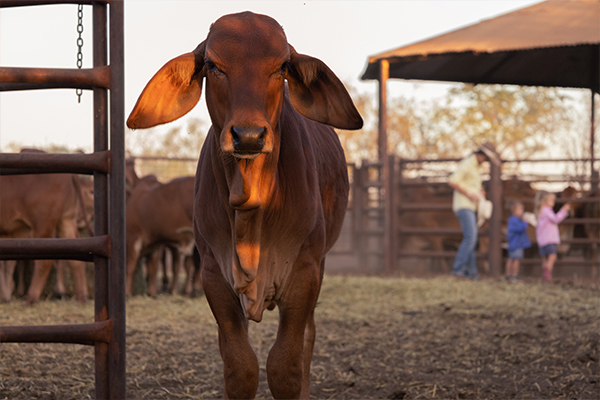The world of a weaner calf today appears to be more complex than days gone by, and contributing to this have been the developments of pain relief products and the new realm of animal welfare guidelines.

While producers of course abide, why not make it easy by adopting the Elders Weaner Wellbeing program.
Before we dive into weaner wellbeing, it is important to have some understanding of how they arrived at the weaning stage. In an uncontrolled environment, the beef calf needs to transition from a pre-ruminant to ruminant, or from a diet of milk to grass this in general is a gradual process. You can observe this when conditions are favourable, and the calves are well-grown and cud chewing. Grazing and cud chewing are indicators that the calf has transitioned from pre to ruminant. This development is vital in the calves life, and when they get to weaning weight we then introduce them to possibly their worst day of their so-far short life. We draft mum off, then we ‘process’ them - the next thing they know is they’re cutting their own lunch.
The Weaner Wellbeing program involves a pain relief and a vaccination program. In the North this includes Botulinum, Clostridial – 5 in 1 – 7 in 1 (both doses), a drench, yard feeding (supplement) coupled with good quality hay and clean water, all this wrapped with an education. With all the other activity around this time, calves may already be under some stress, which can increase oxidative stress and immune suppression, making the weaner susceptible to ill thrift. This means it is often timely to introduce a trace minerals and B12 treatment, to assist with limiting tissue and cell damage during the stressful period.
Hay and water are simple aspects of the weaning process, yet often forgotten. We hear of many conversations in and around the kitchen table on stations with a boss and the bore runners discussing the cleaning of troughs out on the run, yet the troughs at the yards prior to weaning are forgotten in some cases. Remember: clean water and quality hay.
Supplements in the yard then into the paddock are a great way to set your replacement heifers up too. When you get the supplementation correct you can arrive at quality females to go into your joiner plan. Early maturity enhanced joining weight, combined with some genetic testing and you will be able identify your super mums moving forward. Heifers that achieve critical mating weight –66% of standard reference weight – before joining will have higher lifetime fertility (Source: Meat and Livestock Australia).
Introducing pain relief is an important process to getting the weaner over the processing hurdle, if we can maintain the normal behaviour, then we are able to reduce the things that may cause set backs, and your weaners will go forward.
For a tailored, cost-effective Elders Weaner Wellbeing Program, contact your local Elders Livestock Production team. They will help you with the correct plan for your weaners and your enterprise.
